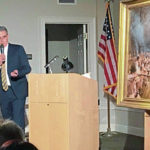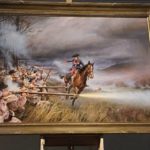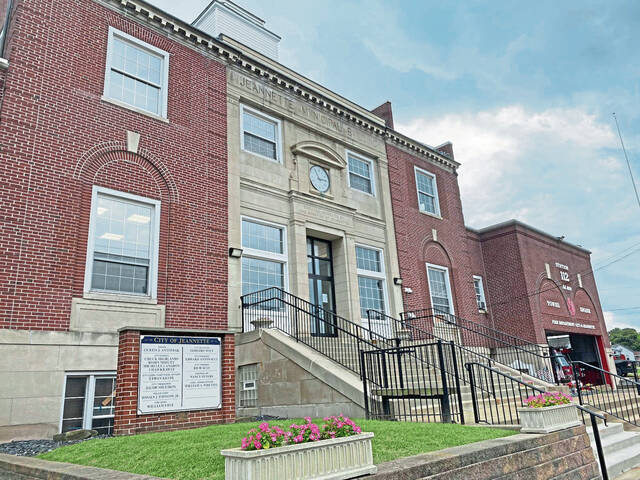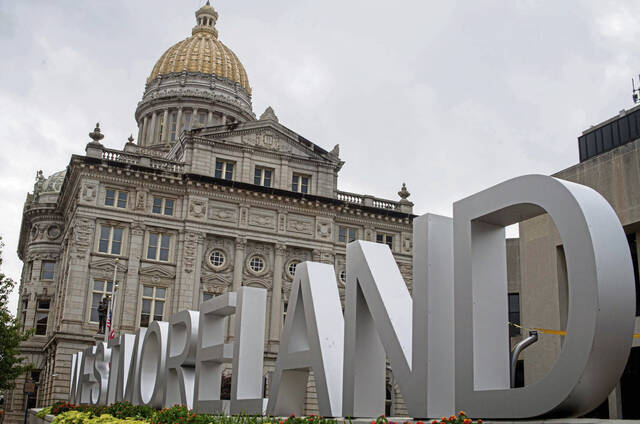Renowned artist and Ligonier native Chas Fagan has painted portraits of all the U.S. presidents, including George Washington.
Friday evening, he unveiled a more active impression of Washington — as a 26-year-old Virginia colonel faced with “friendly fire” in a French and Indian War engagement near Fort Ligonier.
Fagan presented his painting of the military action, titled “Flash Point,” at the annual meeting of the Fort Ligonier Association, which commissioned the image for display in the new George Washington Gallery at the fort museum.
“It’s something I’ve been interested in for a long time,” Fagan said of the Nov. 12, 1758, incident — a pivotal but lesser-known episode in Washington’s pre-Revolutionary War career.
“It shows him as a younger man,” he said of the painting. “His expression is not that of the sedate, square-jawed guy on the dollar bill.”
The framed 62-by-44-inch painting will be displayed near a copy of Washington’s “Remarks,” his handwritten account of his years on the Pennsylvania frontier, including the traumatic friendly fire engagement. Fagan drew upon that document as well as other historical works to guide the design of his painting.
“It’s incredible to have these notes about this event written out in his own hand,” he said.
Determined to thwart a raiding party of French Marines and Native Americans, two groups of Virginian troops — one of them led by Washington — attempted to surround the enemy.
Instead, with the sun setting and a fog emerging, the Virginians collided with each other.
Adding to the confusion, Fagan noted, some of the Virginians were dressed in civilian garb, having worn out their standard military clothing.
At a central point in Fagan’s painting, Washington is seen “knocking up the barrel of the musket with his sword,” to bring a halt to the mistaken exchange of fire.
Captain Thomas Bullitt is another identifiable figure depicted attempting to stop the friendly fire.
“He was recorded as having run down in between the lines waving his hat,” Fagan said.
Fagan had about a year to complete the painting but noted he doesn’t track the time he spends on a given creative project. He completed the image by applying oil paint on linen.
To match the look of the painting with its subject, he said, “I used an older technique, painting in thin layers. I muted the palette and kept it very limited.”
Fagan’s title for the painting is apt because the disastrous engagement ended on a positive note for the forces at Fort Ligonier.
They captured a French prisoner, who revealed the French forces at Fort Duquesne were more vulnerable than the British had believed. Instead of wintering at Fort Ligonier, the British advanced and successfully seized Fort Duquesne, site of the future Pittsburgh.
Fagan noted Washington’s friendly fire incident was a “terrible experience that kind of steeled him for the next phase” — defeating the British in the Revolutionary War.
Visit fortligonier.org for more information about Ligonier’s authentically reconstructed British fort and the associated museum and education center.











